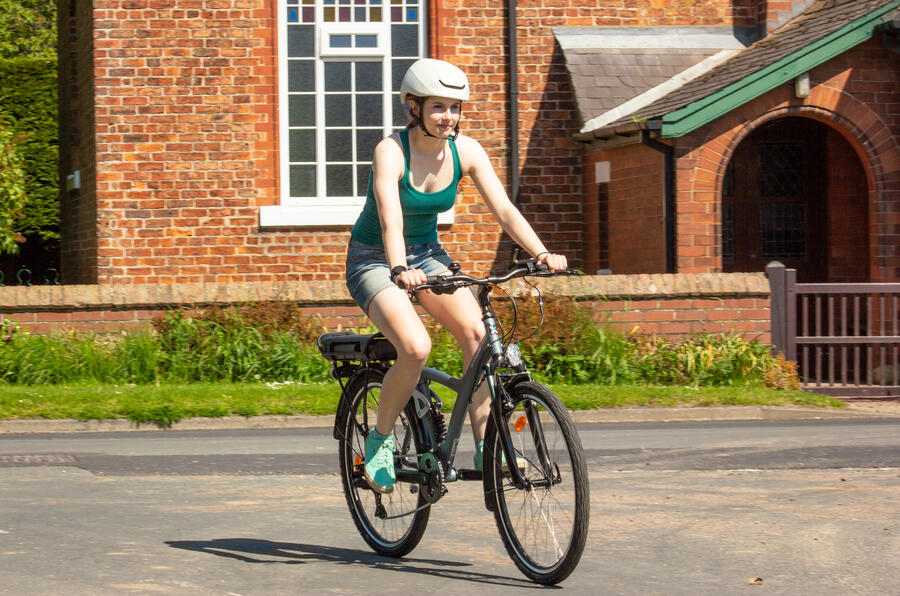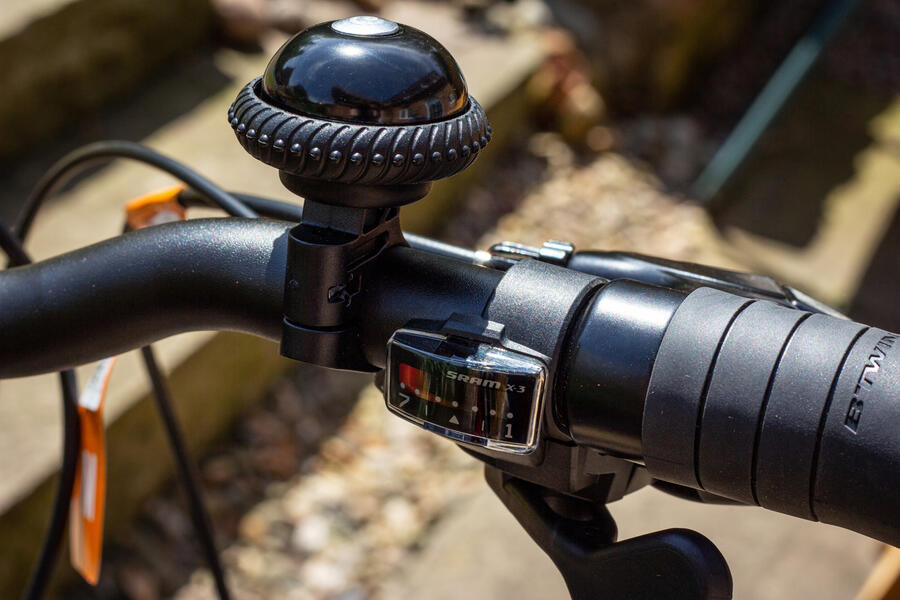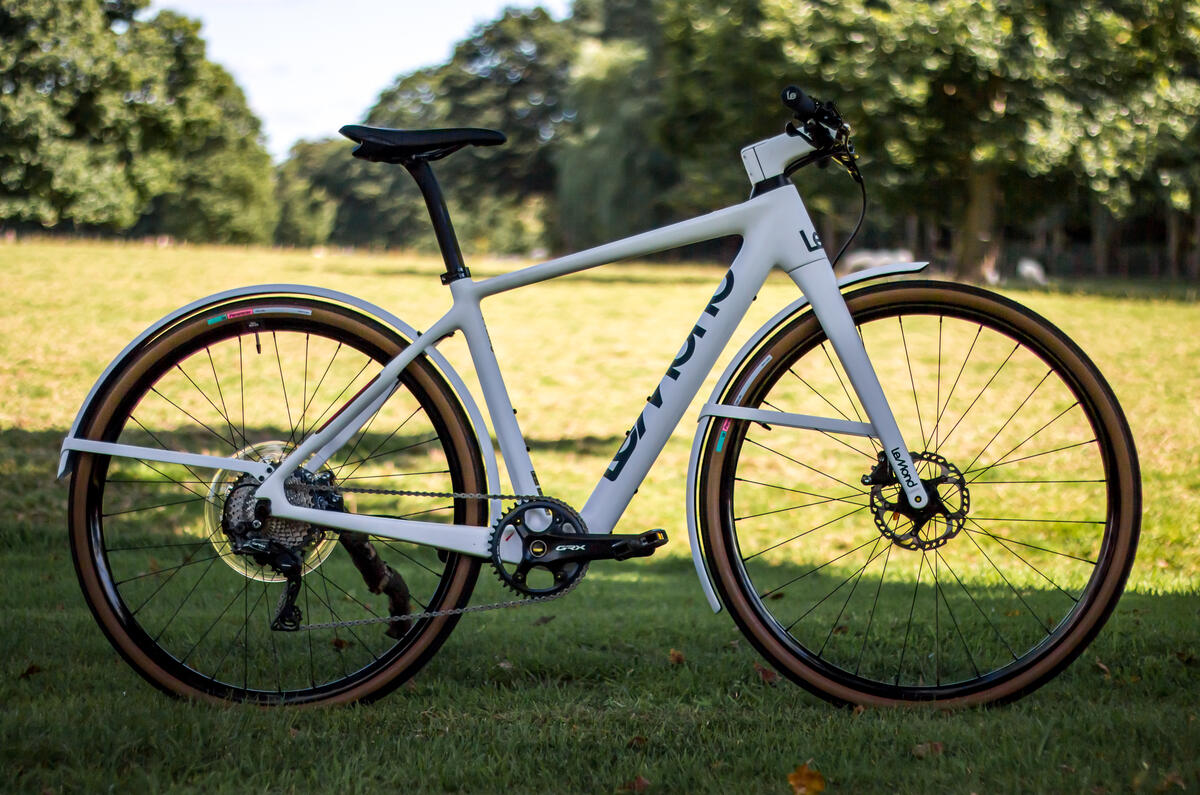Electric bikes can appear quite daunting if you're not familiar with them, let alone all the terminology that goes along with them.
If you're looking at buying an e-bike, it's important to know what everything means and how you know whether the bike you're looking at is good value for money. So we've debunked some of the most common e-bike jargon to help you in your quest.

Motor (Mid-drive and hub-drive)
The motor is what delivers the force of the bike’s assist. It takes the electric energy from the battery and converts it into kinetic energy to aid propulsion while you pedal. There are a few types of motors available, but the most common in the UK are mid-drive and hub-drive.
Mid-drive motors sit in the middle of the bike, usually around the bottom bracket area, between the crank arms. The benefit of this positioning is an improvement in the bike’s weight distribution. The handling might feel more natural, like an unassisted bike, and the motor can react more quickly through the use of torque sensors.
Hub-drive motors are situated in the hubs of the wheels. They don't look as out of place as they used to, and many brands use this system due to the lack of maintenance they require since everything is protected inside the casing. A further benefit is that they cause less stress on your chain than a mid-drive motor does, and while the hub-drive motors power the wheel, they operate independently from the gears, so if you encounter a problem mid-ride, you can still get home.
Amp-hours (Ah)
This term is used to describe the battery’s capacity and thus the amount of charge that the battery can deliver in an hour. For example, a 30Ah battery can draw 30A for one hour, or 1A for 30 hours.
Watt-hours (Wh)
Often found listed in the battery information, the watt-hours determines how many watts can be delivered per hour. If you know the Ah and V (see below) of the bike's systems, you can calculate the Wh. The formula is Ah x V = Wh. So if you had a bike with a 36V, 12Ah battery, you'd have a 432Wh battery. If you run this with a 250W motor at its highest assist level, you'd get just under two hours of battery life.

Watts
This is the measurement used to define the motor’s power output. In the UK, electric motors are allowed to be sold with an output up to and including 250 watts. Anything above this is not classed as an e-bike and is subject to licence and insurance legislation the same as mopeds.
Voltage (V)
Voltage is a measurement of potential energy. E-bike batteries are sold in different voltages, ie 36V. The higher the voltage, the more work it can do with fewer amps needed.
Torque
Simply put, torque is the amount of rotational power the e-bike motor puts out to turn the wheels and so assist the rider. It’s usually measured in newton-metres (Nm) and the higher the torque, the more acceleration the bike motor can provide.
Newton-metres (Nm)
Newton-metres are a measurement of force multiplied by distance. The torque of an e-bike motor is usually measured in Nm (in the UK). So, for example, if the motor is in the wheel (hub-drive), Nm is the power of the motor in newtons multiplied by the radius of the wheel in metres. A motor that can deliver 50 newtons over 0.62 metres (a 700c wheel, which has a radius of 622mm) would be measured at 31Nm.

Pedelec
A pedelec is an electric bike that must be pedalled. The pedal assist (ie the electric assist) only starts when you pedal and stops when you stop pedalling. These are the most common types of e-bikes sold in the UK and do not require any specific insurance or licence to be ridden. The speed limit for the assistance is set to 25km/h (15.5mph) and the maximum power output of the motor is 250W or below.
S-Pedelec
This is an electric bike that has a higher assistance speed limit (28km/h) and may come with a throttle. These are technically classed as mopeds in the UK and so require the same licence requirements as a more typical moped.
Assist levels
These are the different modes of motor assist you can choose from on your bike. Each bike will come with its own pre-set levels, such as eco mode and turbo mode. Some may offer further personalisation through apps or the on-board screen, where you can choose how much assistance you receive depending on how much force you put through the pedals.

Walk assist
Some electric bikes come with a feature called 'walk assist' to help you manoeuvre the bike while you walk. It's particularly useful on steep hills or if you don't have the strength to move the bike. Many e-bikes can be quite heavy due to the weight of the battery and motor.
Battery range
The battery range is the number of miles you can expect from a single battery charge on your e-bike. Generally, you can expect between 20 and 75 miles depending on the bike, the battery, and the type of riding you are doing. A hilly route where you are using more of the assist will drain the battery faster than a flat route using an economy assist mode, so remember that most headline claims are either best-case or average-use scenarios.
EAPC
Acronym for ‘electrically assisted pedal cycle’.
Words by Rebecca Bland.
This is one in a series of articles by Autocar exploring e-mobility under the Move Electric name, a new editorial channel created by Haymarket, our owner.
READ MORE
e-CARS
e-BIKES
e-MOTORBIKES
e-SCOOTERS




Add your comment